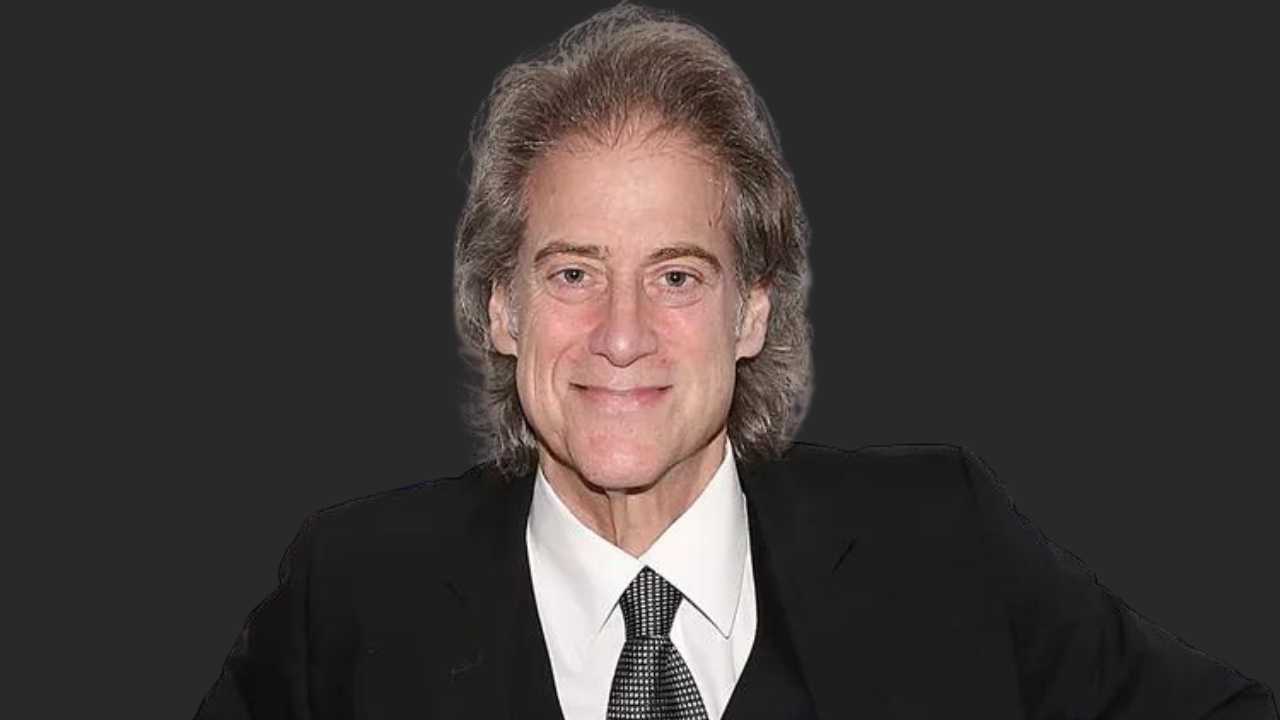Indian ethnicity is a complex and diverse topic that has been the subject of much discussion and debate. India is a country with a rich cultural heritage and a long history of ethnic diversity. With over 1.4 billion people, India is the second-most populous country in the world, and its population is made up of a wide range of ethnic groups.
Understanding ethnicity is an important aspect of understanding Indian culture and society. Ethnicity refers to a person’s cultural background, which includes their language, religion, customs, traditions, and other cultural practices. In India, ethnicity is closely tied to religion and language, and there are many different ethnic groups that make up the country’s population.
Indian ethnicity is a complex and multifaceted topic that requires a nuanced understanding of the country’s history, culture, and society. In this article, we will provide an overview of Indian ethnicity, including the major ethnic groups in India, regional ethnic diversity, ethnic languages, and the relationship between ethnicity and Indian culture and society. We will also address some frequently asked questions about Indian ethnicity to provide a comprehensive understanding of this important topic.
Key Takeaways
- Indian ethnicity is a diverse and complex topic that requires a nuanced understanding of the country’s history, culture, and society.
- Ethnicity in India is closely tied to religion and language, and there are many different ethnic groups that make up the country’s population.
- Understanding Indian ethnicity is an important aspect of understanding Indian culture and society.
Understanding Ethnicity
Ethnicity is a term used to refer to a group of people who share a common cultural, linguistic, or religious background. It is a social construct that is shaped by historical, political, and economic factors. Ethnicity is often confused with race, but the two are different concepts. While race is based on physical characteristics like skin color, ethnicity is based on cultural factors.
In India, ethnicity is a complex issue due to the country’s diverse population. According to ResearchGate, India’s present-day population is a conglomeration of people belonging to different racial groups with different ethnic backgrounds. The people entered India at different times in history, and each group brought with them their own culture, language, and traditions.
There are three major ethnic groups in India, namely Indo-Aryan, Dravidian, and Mongoloid. The Indo-Aryan group is spread across northern and central India, and their language is Indo-European. The Dravidian group is predominantly found in southern India, and their language is Dravidian. The Mongoloid group is found in northeastern India, and their ethnicity is a mixture of Caucasoid and Mongoloid ethnicities.
Ethnicity plays a significant role in Indian society, particularly in the areas of politics, education, and employment. Many people identify themselves based on their ethnicity, and there are often tensions between different ethnic groups. However, it is important to remember that ethnicity is a social construct and that we are all human beings with the same basic needs and desires.
In conclusion, ethnicity is a complex issue in India due to the country’s diverse population. The three major ethnic groups in India are Indo-Aryan, Dravidian, and Mongoloid. It is important to remember that ethnicity is a social construct and that we should treat everyone with respect and dignity regardless of their ethnicity.
Indian Ethnicity Overview
India is a diverse country with a rich cultural heritage. The ethnicity of India is a complex mix of different groups, including indigenous people, migrants, and invaders. The country is home to over 1.3 billion people, and there are over 2,000 ethnic groups in India.
The majority of the population in India belongs to the Indo-Aryan and Dravidian ethnic groups. The Indo-Aryan group is the largest, and it is concentrated in the northern and central parts of India. The Dravidian group is mainly found in the southern part of India.
Apart from these two major groups, there are several other ethnic groups in India. Some of these groups are listed below:
- Austroasiatic: This group is mainly found in the northeastern part of India, and it includes tribes such as Khasi, Jaintia, and Garo.
- Tibeto-Burman: This group is also found in the northeastern part of India, and it includes tribes such as Naga, Mizo, and Lushai.
- Mongoloid: This group is mainly found in the northeastern part of India, and it includes tribes such as Bhutia, Lepcha, and Sherpa.
- Indo-European: This group includes several subgroups, such as Indo-Iranian, Greek, and Romani. The Indo-Iranian subgroup includes several ethnic groups, such as Punjabi, Gujarati, and Bengali.
- Dravidian: This group is mainly found in the southern part of India, and it includes several ethnic groups, such as Tamil, Telugu, and Kannada.
India’s ethnic diversity has led to the development of several languages, religions, and cultural practices. Hindi is the most widely spoken language in India, followed by Bengali, Telugu, and Marathi. Hinduism is the most widely practiced religion in India, followed by Islam, Christianity, and Sikhism.
In conclusion, India’s ethnicity is a complex mix of different groups, and it has led to the development of a rich and diverse culture.
Major Ethnic Groups in India
India is a diverse country with more than two thousand ethnic groups [1]. Here are the major ethnic groups in India.
Indo-Aryans
The Indo-Aryans are the largest ethnic group in India, making up about 72% of the population [2]. They are a diverse group of people who speak different languages such as Hindi, Bengali, Gujarati, Marathi, and Punjabi [3]. The Indo-Aryans are believed to have migrated to India from Central Asia and Europe around 1500 BCE [4].
Dravidians
The Dravidians are the second-largest ethnic group in India, making up about 25% of the population [5]. They are concentrated in the southern part of India and speak languages such as Tamil, Telugu, Kannada, and Malayalam [6]. The Dravidians are believed to be the original inhabitants of India and have been living in the region for more than 4000 years [7].
Mongoloids
The Mongoloids are a small ethnic group in India, making up less than 1% of the population [8]. They are concentrated in the northeastern part of India and speak languages such as Assamese and Manipuri [9]. The Mongoloids are believed to have migrated to India from Southeast Asia and China around 2000 BCE [10].
Other Ethnic Groups
Apart from the Indo-Aryans, Dravidians, and Mongoloids, there are many other ethnic groups in India. Some of these groups include:
- Austroasiatic: The Austroasiatic ethnic group includes tribes such as the Santhal, Oraon, and Munda, who are concentrated in the eastern part of India [11].
- Tibeto-Burman: The Tibeto-Burman ethnic group includes tribes such as the Naga, Lepcha, and Bhutia, who are concentrated in the northeastern part of India [12].
- Indo-Scythians: The Indo-Scythians are a small ethnic group in India who are believed to have migrated to India from Central Asia around 200 BCE [13].
India is a melting pot of cultures, languages, and ethnicities. The diversity of the country is what makes it unique and fascinating.
Regional Ethnic Diversity in India
India is a diverse country with a wide range of ethnic groups, languages, and cultures. The Indian Constitution recognizes 22 official languages and more than 1,600 dialects. The country’s population is divided into various ethnic groups, each with its unique customs, beliefs, and practices.
Here are some of the major ethnic groups in India, along with their regions of origin:
- Dravidians: This ethnic group is concentrated in the southern part of India, including the states of Tamil Nadu, Kerala, Karnataka, and Andhra Pradesh. The Dravidian languages include Tamil, Telugu, Kannada, and Malayalam.
- Indo-Aryans: This ethnic group is concentrated in the northern and western parts of India, including the states of Uttar Pradesh, Rajasthan, Gujarat, and Punjab. The Indo-Aryan languages include Hindi, Punjabi, Gujarati, and Marathi.
- Tibeto-Burmans: This ethnic group is concentrated in the northeastern part of India, including the states of Arunachal Pradesh, Nagaland, Manipur, and Mizoram. The Tibeto-Burman languages include Assamese, Bodo, and Manipuri.
- Mongoloids: This ethnic group is concentrated in the Himalayan region of India, including the states of Sikkim and Ladakh. The Mongoloid languages include Tibetan and Ladakhi.
- Austro-Asiatics: This ethnic group is concentrated in the central and eastern parts of India, including the states of Chhattisgarh, Jharkhand, and Odisha. The Austro-Asiatic languages include Santali and Ho.
It is important to note that these ethnic groups are not mutually exclusive, and there is significant overlap between them. India’s ethnic diversity is one of its greatest strengths, and it is a testament to the country’s rich cultural heritage.
Ethnic Languages in India
India is a country with a rich linguistic heritage. According to Wikipedia, there are over 19,500 languages or dialects spoken in India. However, the Constitution of India recognizes only 22 languages as official languages of the country.
The two major language families in India are the Indo-European and Dravidian languages. The Indo-European language family includes languages like Hindi, Bengali, Punjabi, Gujarati, Marathi, and many others. These languages are spoken by the majority of the population in India. Hindi, in particular, is the most widely spoken language in India and is the official language of the country.
The Dravidian language family includes languages like Tamil, Telugu, Kannada, and Malayalam. These languages are primarily spoken in South India. Tamil, in particular, is one of the oldest languages in the world and has a rich literary tradition.
Apart from the Indo-European and Dravidian languages, there are several other language families spoken in India. The Austroasiatic language family includes languages like Santali, Mundari, and Khasi. The Sino-Tibetan language family includes languages like Manipuri, Tibetan, and Sherpa. The Tai-Kadai language family includes languages like Thai and Lao.
It is important to note that the linguistic diversity of India is not limited to just language families. Within each language family, there are several dialects and variations. For example, within the Indo-European language family, there are several dialects of Hindi, each with its own unique characteristics. Similarly, within the Dravidian language family, there are several dialects of Tamil, each with its own unique features.
In conclusion, India is a linguistically diverse country with several language families and dialects. The linguistic diversity of India is an important aspect of its cultural heritage and is something that should be celebrated and preserved.
Indian Ethnicity and Culture
India is a land of diversity, with a rich cultural heritage and a wide range of ethnic groups. The ethnic composition of India is incredibly diverse, with over 2,000 different ethnic groups. The majority of the population is composed of Indo-Aryans, Dravidians, and Mongoloids.
Broadly speaking, the peoples of north-central and northwestern India tend to have ethnic affinities with European and Indo-European peoples from southern Europe, the Caucasus region, and Southwest and Central Asia. On the other hand, the people of southern India tend to have ethnic affinities with the Dravidian peoples of southern India, Sri Lanka, and the Maldives.
India is also home to a wide range of religions, including Hinduism, Islam, Christianity, Buddhism, Jainism, Sikhism, and Zoroastrianism. The country celebrates holidays and festivals of various religions.
The largest ethnic groups in India are Hindi/Urdu speakers, Bengalis, and Telugus. Hindi and Urdu are two literary forms of a single language called Hindustani. Bengali is the official language of the Indian state of West Bengal, while Telugu is the official language of the Indian state of Andhra Pradesh.
India’s ethnic diversity is reflected in its cuisine, music, dance, and art. Each region of the country has its own unique cultural traditions and customs. For example, the state of Rajasthan is known for its colorful costumes, vibrant music, and dance forms. The state of Kerala is famous for its backwaters, beaches, and Ayurvedic treatments.
In conclusion, India’s ethnicity and culture are incredibly diverse, with over 2,000 different ethnic groups and a wide range of religions. The country’s cultural heritage is reflected in its cuisine, music, dance, and art, and each region of the country has its own unique cultural traditions and customs.
Ethnicity and Indian Society
India is a diverse country with a rich cultural heritage. The country is home to thousands of small ethnic and tribal groups. According to a report published by the National Commission for Scheduled Tribes, there are 705 Scheduled Tribes in India. These tribes are recognized by the Indian Constitution and are given special benefits and protections.
The Indian population is composed of two genetically divergent and heterogeneous populations which mixed in ancient times. These populations are known as Ancestral North Indians (ANI) and Ancestral South Indians (ASI). ASI are the indigenous people of India, while ANI are believed to have migrated to India from Central Asia and the Middle East.
The major ethnic groups in India include the Indo-Aryans and the Dravidians. The Indo-Aryans are believed to have migrated to India from Central Asia and Europe, while the Dravidians are the indigenous people of South India.
India is ethnically diverse, with more than 2,000 different ethnic groups. There is also significant diversity within regions, and almost every state and several districts have their own distinct mixture of ethnicities, traditions, and culture. The table below provides a few examples of the ethnic groups in India.
| Ethnic Group | Region |
|---|---|
| Bodo | Assam |
| Dogra | Jammu and Kashmir |
| Garo | Meghalaya |
| Gond | Madhya Pradesh |
| Khasi | Meghalaya |
| Mizo | Mizoram |
| Naga | Nagaland |
| Santhal | West Bengal |
| Toda | Tamil Nadu |
| Warli | Maharashtra |
India’s diversity is reflected in its languages, religions, and traditions. Hindi is the most widely spoken language in India, but there are also many other languages spoken throughout the country, including Bengali, Telugu, Marathi, Tamil, and Gujarati. Hinduism is the dominant religion in India, but there are also significant populations of Muslims, Christians, Sikhs, Buddhists, and Jains.
In conclusion, India is a diverse country with a rich cultural heritage. The country is home to thousands of small ethnic and tribal groups, and there is significant diversity within regions. The major ethnic groups in India include the Indo-Aryans and the Dravidians, and there are many other ethnic groups throughout the country. India’s diversity is reflected in its languages, religions, and traditions.
Conclusion
In conclusion, India is a country with a rich and diverse ethnic makeup. The people of India are made up of various ethnic groups, each with their own distinct culture, language, and traditions. The ethnic groups in India can be broadly classified into two categories, the Indo-Aryans and the Dravidians.
The Indo-Aryans are the dominant ethnic group in India and are found mainly in the northern and central regions of the country. They are believed to have migrated to India from Central Asia and Europe around 1500 BC. The Dravidians, on the other hand, are found mainly in the southern regions of India and are believed to be the original inhabitants of the country.
Apart from these two major ethnic groups, India is also home to a large number of other ethnic groups, each with their own unique identity. These ethnic groups are spread across the country and have contributed significantly to the rich cultural heritage of India.
The diversity of India’s ethnic makeup is reflected in the country’s many languages, religions, and traditions. India is home to over 2,000 different ethnic groups, each with its own distinct language and culture. This diversity has helped shape India’s rich cultural heritage and has made it one of the most culturally diverse countries in the world.
Despite the diversity, India has managed to maintain a sense of unity and national identity. This is due to the country’s shared history, traditions, and values. The people of India have a strong sense of national pride and are united in their love for their country.
Frequently Asked Questions
Is Indian considered an ethnicity or nationality?
Indian is considered a nationality rather than an ethnicity. India is a diverse country with over 2,000 ethnic groups and a wide range of cultures, religions, and languages. While there are commonalities among these groups, they also have distinct differences.
What are the different races that exist in India?
There is no single race that exists in India. India is home to a diverse mix of ethnic groups, which can be broadly categorized into four main groups: Indo-Aryans, Dravidians, Mongoloids, and Negritos. However, it is important to note that these categories are not rigid and there is significant overlap between them.
What are the major ethnic groups in India?
The major ethnic groups in India include Indo-Aryans, Dravidians, and Mongoloids. Indo-Aryans are the largest ethnic group and are found primarily in the northern and central parts of India. Dravidians are concentrated in the southern part of the country, while Mongoloids are found in the northeastern states.
Are Indians considered South Asian?
Yes, Indians are considered South Asian. South Asia is a region that includes India, Pakistan, Bangladesh, Nepal, Bhutan, and Sri Lanka. These countries share many cultural, linguistic, and historical similarities.
What ethnicity do people from India belong to?
As mentioned earlier, people from India belong to a wide range of ethnic groups, each with its own distinct culture, language, and traditions. It is not accurate to say that all people from India belong to a single ethnicity.
How can one determine their ethnicity in India?
Determining one’s ethnicity in India can be a complex process, as there are so many different ethnic groups with overlapping characteristics. In general, ethnicity is determined by a combination of factors, including language, religion, culture, and ancestry. However, it is important to remember that ethnicity is a social construct and can be influenced by a range of factors.











